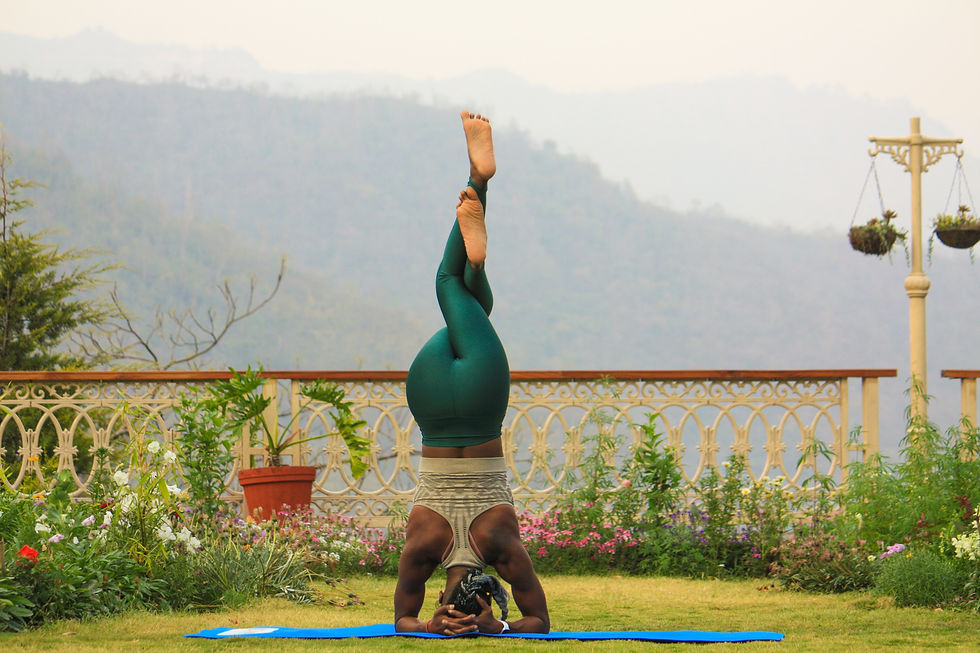Yoga Class Theme: Increasing Proprioception
- Kyle Shri

- Feb 25, 2021
- 4 min read

Most of us grew up learning that we have five senses: touch, taste, smell, sight, and hearing. However, as time goes on, we’re realizing that there is a little more to our human abilities for perception.
If we consider the definition of a “sense” to be a “group of sensory cells that responds to a specific physical phenomenon and, that corresponds to a specific region of the brain where the signals are received and “interpreted,” as most neurologists do, then some scientists would number our senses as high as 53.
Nociception (the perception of pain) and equilibrioception (the perception of balance) are two examples of senses that aren’t typically included in our traditional five.
Regardless of how many senses you believe there are, there is one that is undeniably essential to yoga practice: the awareness of the body’s positioning in space, referred to as proprioception (and sometimes, Kinesthesia).
If you close your eyes, and then touch your nose with your hand, you’ll be experiencing a very simple manifestation of proprioception in action facilitated by neurons called proprioceptors in the muscles, tendons, and joints. These neurons sense and encode information including limb velocity, movement, load, and limits.
In movement practices like yoga, it's not hard to see why proprioception is key. We’re moving between complex postures that often entail subtle adjustments while coordinating multiple simultaneous factors such as our gaze, breath, and pace. As such, it’s necessary to inherently understand and remain aware of how our bodies are positioned in space.
Imagine trying to do even a simple Sun Salutation without a sense of proprioception. It would be nearly impossible, as your gaze would most likely attempt to follow and lead every single bodily movement.
So, let’s talk a bit about how you can use the concept of proprioception to increase the bodily awareness of your students.
How to use this theme in a yoga class
Before class:
Briefly explain to your students that senses are in fact far more nuanced than we typically appreciate. You may want to present the examples of other senses written above, or mention that the awareness of our own mental state that we cultivate during meditation could be considered a sense of its own. Then mention the idea of proprioception, and explain that it entails our internal awareness of our physical body in space.
If you begin your class with a brief meditation, you may want to include a body scan to begin cultivating proprioception before moving. To do this, ask students to begin focusing on a small part of one of their extremities (like a toe or finger). Cue them to focus all their awareness in that part of the body. Feel the heat, the flow of blood into the area, the solidity of the muscle and tissue, the space it takes up, and lastly, it’s physical positioning. From there, progressively expand the awareness to encompass a larger and larger area (for example, move from the toe to the entire foot, then to the lower leg, then to the whole leg, or whole lower body). This can be quite a long exercise depending on your pacing so be intentional about how much time you want to take with this opening. For a quick option, you may just encourage students to bring their awareness to their entire bodies while in a brief seated meditation.
During class:
As you progress through class, encourage students to bring their awareness to different parts of the body while in different poses. For example, in Downward Facing Dog, you may ask them to bring their awareness to the hands and arms, then to the upper back, then to the torso. By encouraging students to only focus on one area of the body at a time, they will build their ability to inherently sense their bodily positioning.
Then, have students hold a relatively simple posture such as Warrior II, and ask them to close their eyes. Cue them to imagine they can see a third person perspective of their own body from every angle. What do they look like from the front? What about the sides? Or from behind? This brief visualization exercise can help students further tap into their internal awareness.
Lastly, try to add a balancing sequence into your flow. Balancing requires you to remain aware and adaptive in regards to your body’s positioning to avoid toppling over. Plus, if you mentioned equilibrioception, you can bring that idea back and mention that you’re also building your ability to sense how you are balanced.
At the end of class:
As you wind the class down, you may want to ask students to reflect on their experience. Did they discover anything about how they moved that they hadn’t been aware of before? Did they learn anything new about their bodies? Did they feel stronger or more solid in any postures? Did they feel as though they had an improved ability to balance?
End with the notion that simple awareness can do a lot to improve our performance. Proprioception is a sense that we all inherently have. But just like a fine food critique who has honed their sense of taste, fine movers are able to hone their sense of bodily awareness to enable them to move in some truly amazing ways.





Comments